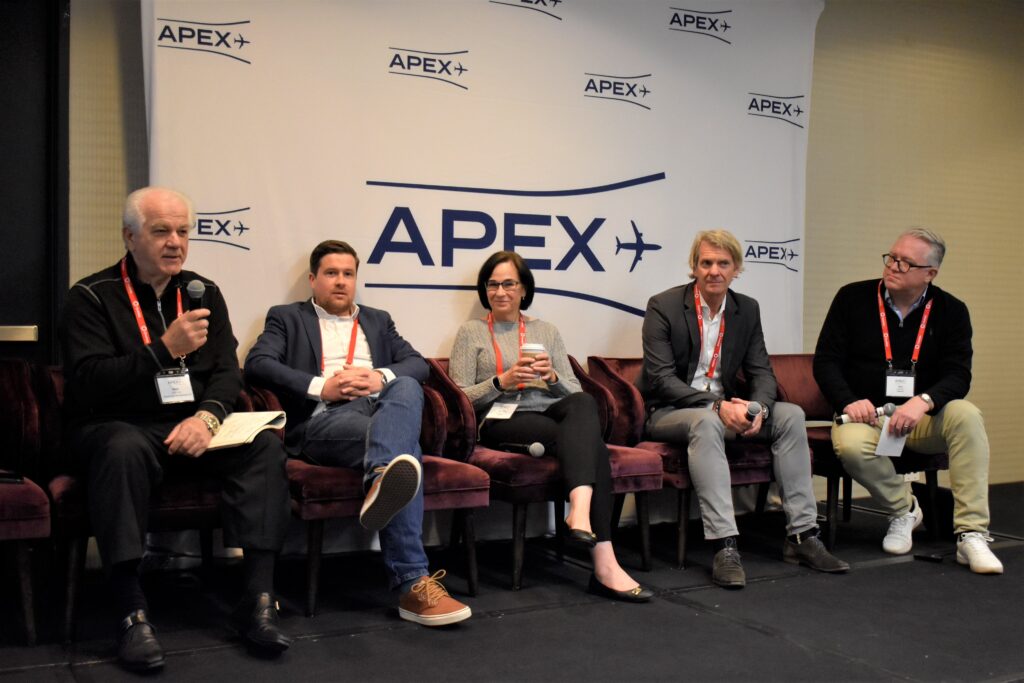APEX TECH: Inadvia’s Matthew Blay leads workshop discussion on inflight advertising and the evolution of IFEC
Share
APEX TECH 2023: Day Three – The final day of the conference got off to an excellent start with the first of two planned panel discussions/workshops on the topic of in-flight advertising.
Looking into how IFEC can unlock the four key advertising revenue drivers: scale, data, access to demand and ease of execution campaigns, the panel included moderator, Inadvia Director, Matthew Blay; and panelists Jonas von Krüchten, Head of Strategy and Business Development, AERQ; Dirk Ottens, Head of Content and Media Strategy, Lufthansa Systems; Mary Rae Esposito, Director of Sales, North America, Spafax and Nick Pajic, Founder and CEO of SmartTray International, LLC.

With the digital advertising market likely to rebalance itself and rebound in 2023 and beyond, noted Blay, the time for airlines to use IFEC to trade on its unique attributes for advertisers – content, environment, quality of audience, etc. – is now.
Like many of the events on day three, Blay’s session was more of an open workshop with a free-flowing dialogue between the panelists and the audience. As such, the subjects raised ranged from specifics about airline data management programs to how much time carriers are willing to dedicate to inflight advertising and even how to best mirror, in-flight, the approaches that streaming businesses embrace as they enter the advertising market on the ground.
In the end, however, a question from a member airline in the audience seemed to best encapsulate the conversation: “Airlines have heard for years about how much ad revenue can be generated through coordinated IFEC, what are the major impediments to realizing these potentials?”
“Again, it’s the supply chain,” replied AERQ’s von Krüchten. “So, putting those elements in place, scaling it up, rolling it out, to really have a fully working supply chain that can fully leverage on what we’re talking about here is important.”
Esposito seemed to agree. “Right now, it’s as good as the information that we have. So, when you talk about seatback advertising, like, what information is the airline capturing that passengers are feeding onto the system on the plane? How much personalization can we do from what’s on the manifest, right? So, we’re limited by that too.”
That said, von Krüchten pointed out that there are things airlines can do right now to prepare for the changes to come.
“You know, ask the passenger certain questions, get them off what we’ve seen before. All of that adds context to what the passenger is doing and the more of that information that we can ultimately feed into the system the better.”
Wrapping things up, Blay noted that while the industry needs to be realistic about the changes in the short term, the investment that involves, and the ways of working that need to change, he is still very excited for the future.
“I think we’ve got the right people in the industry right now and APEX is doing a great job of driving this conversation forward. So, I think there are plenty of reasons to be optimistic,” added Blay. “So, let’s focus on figuring out what’s next!”


